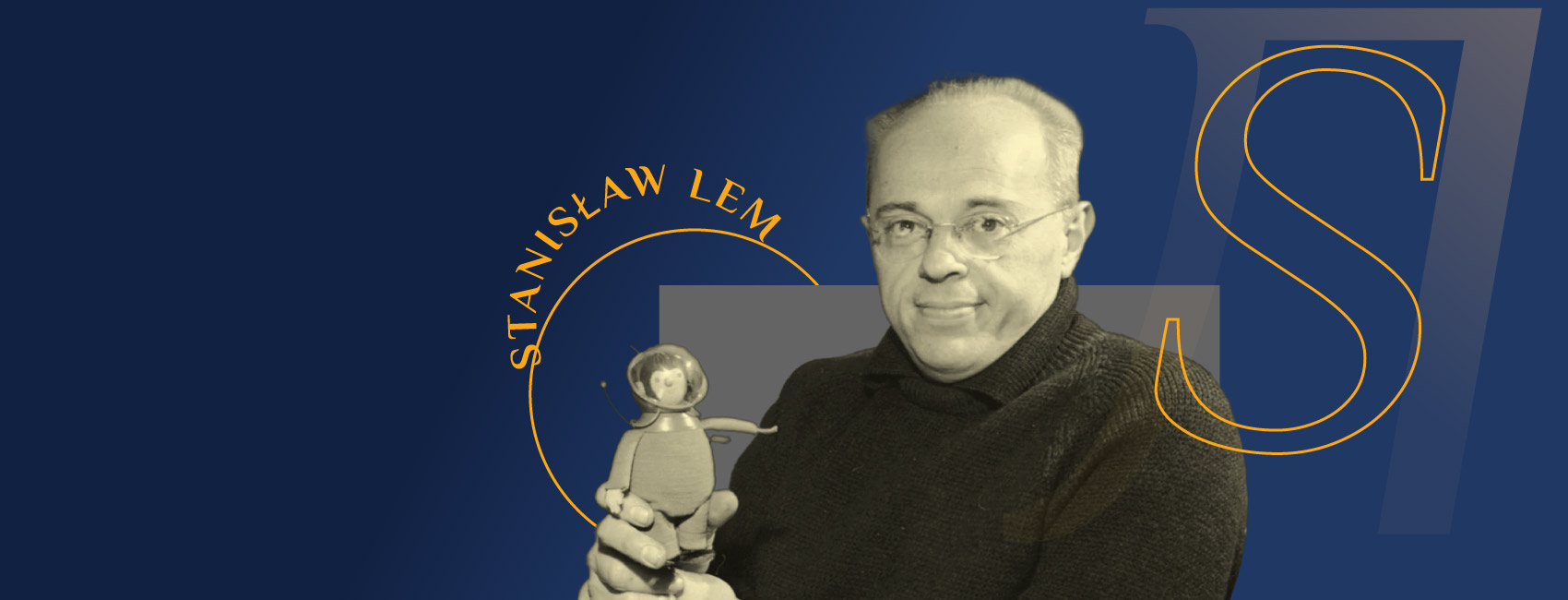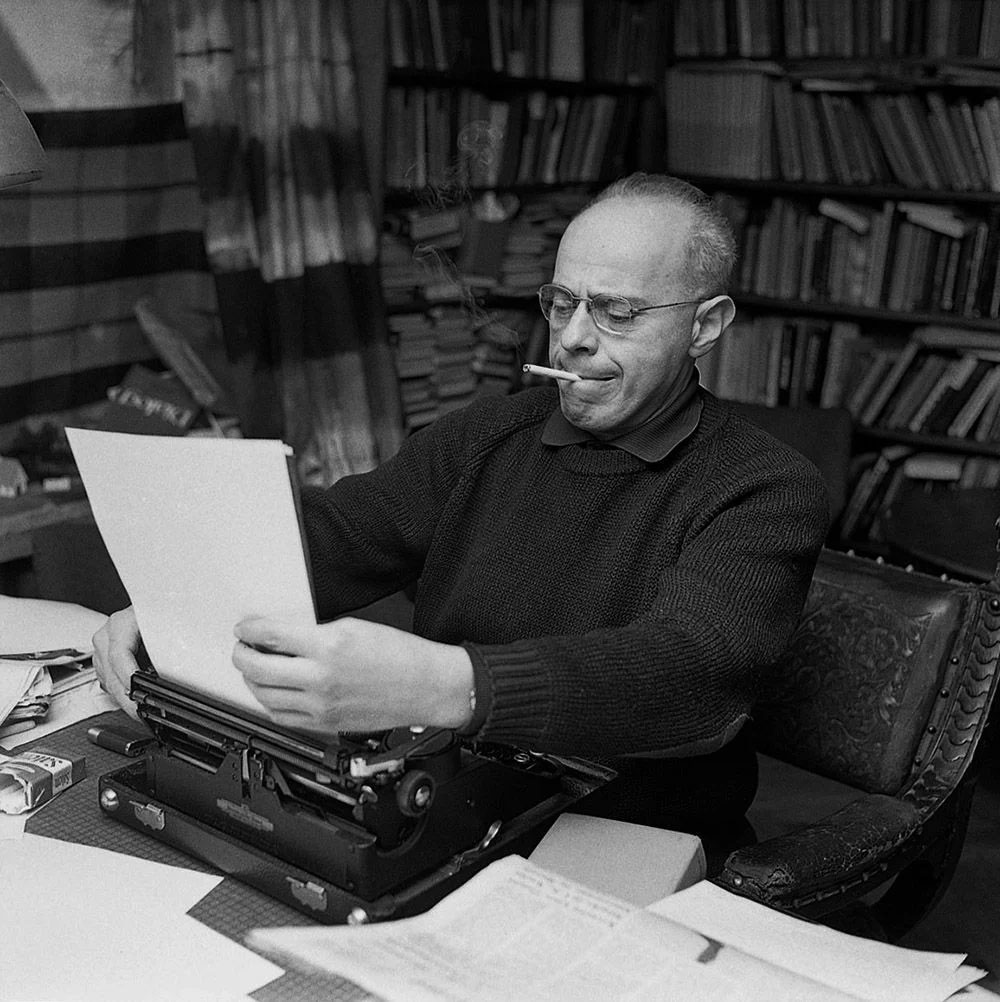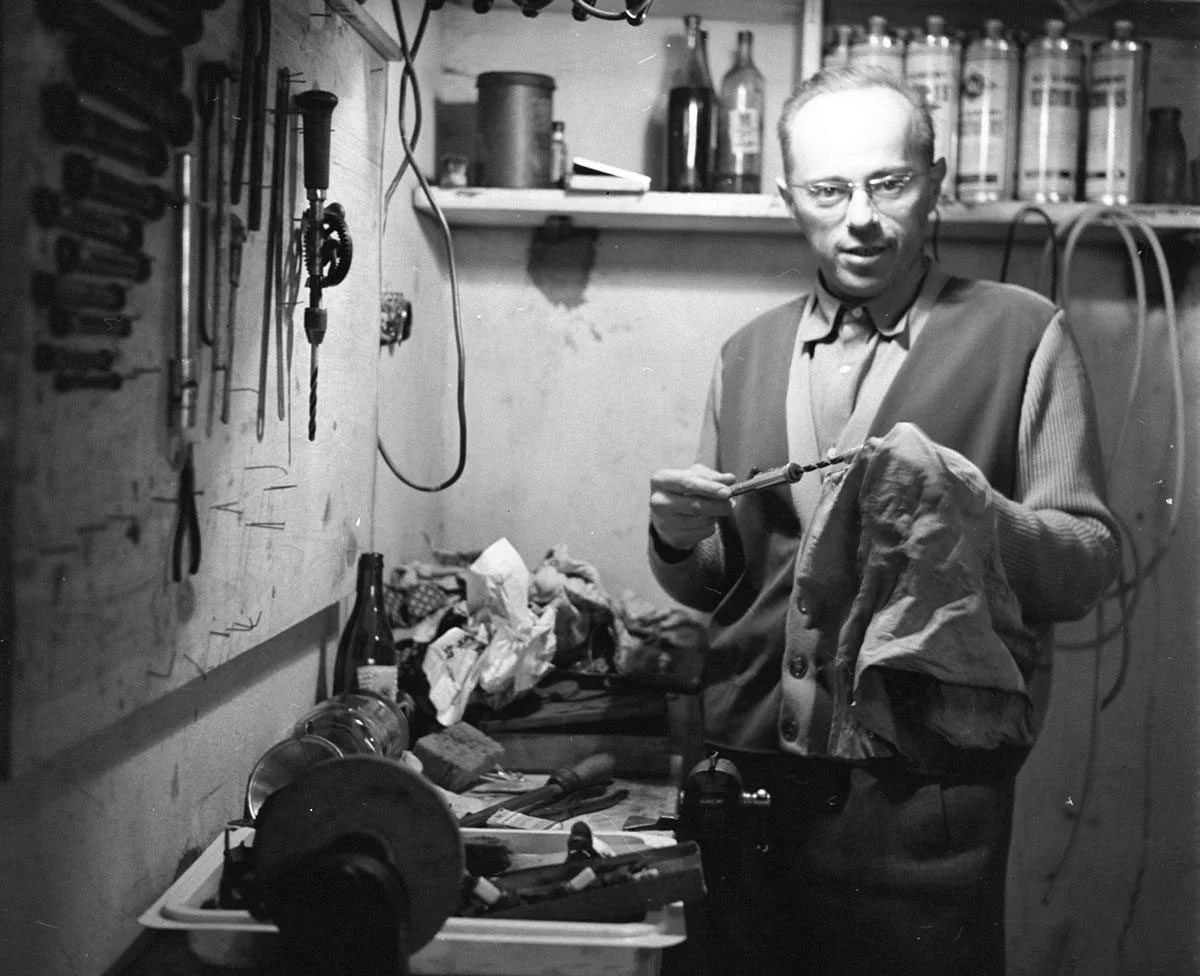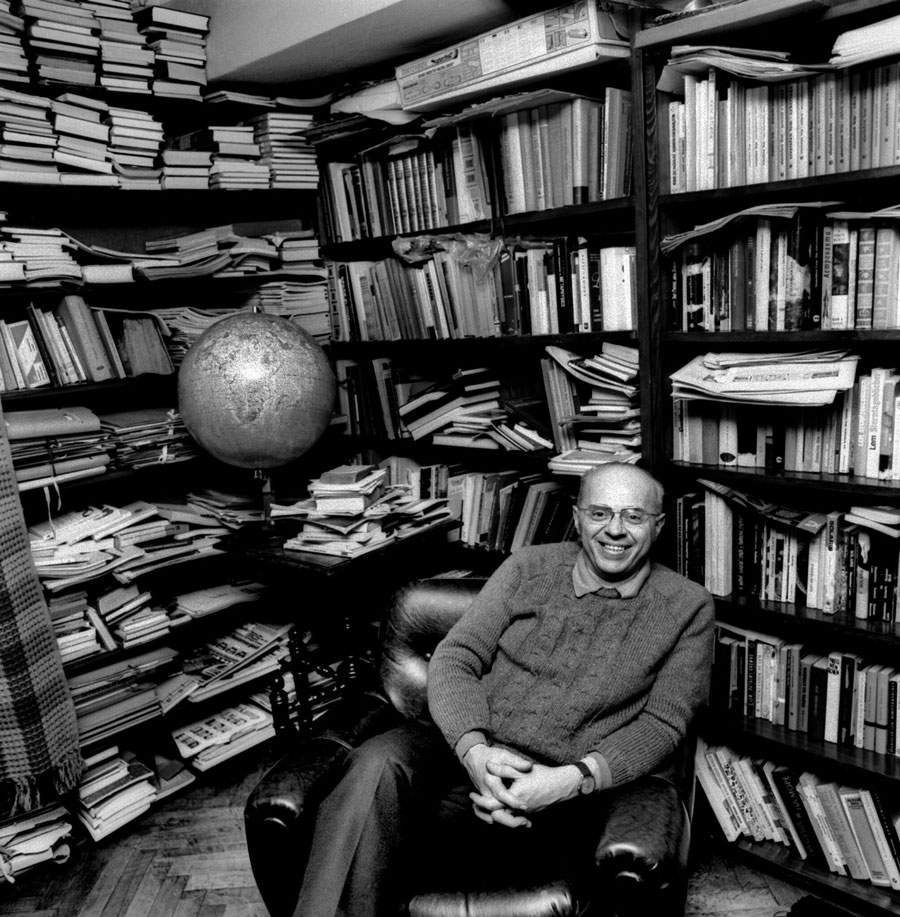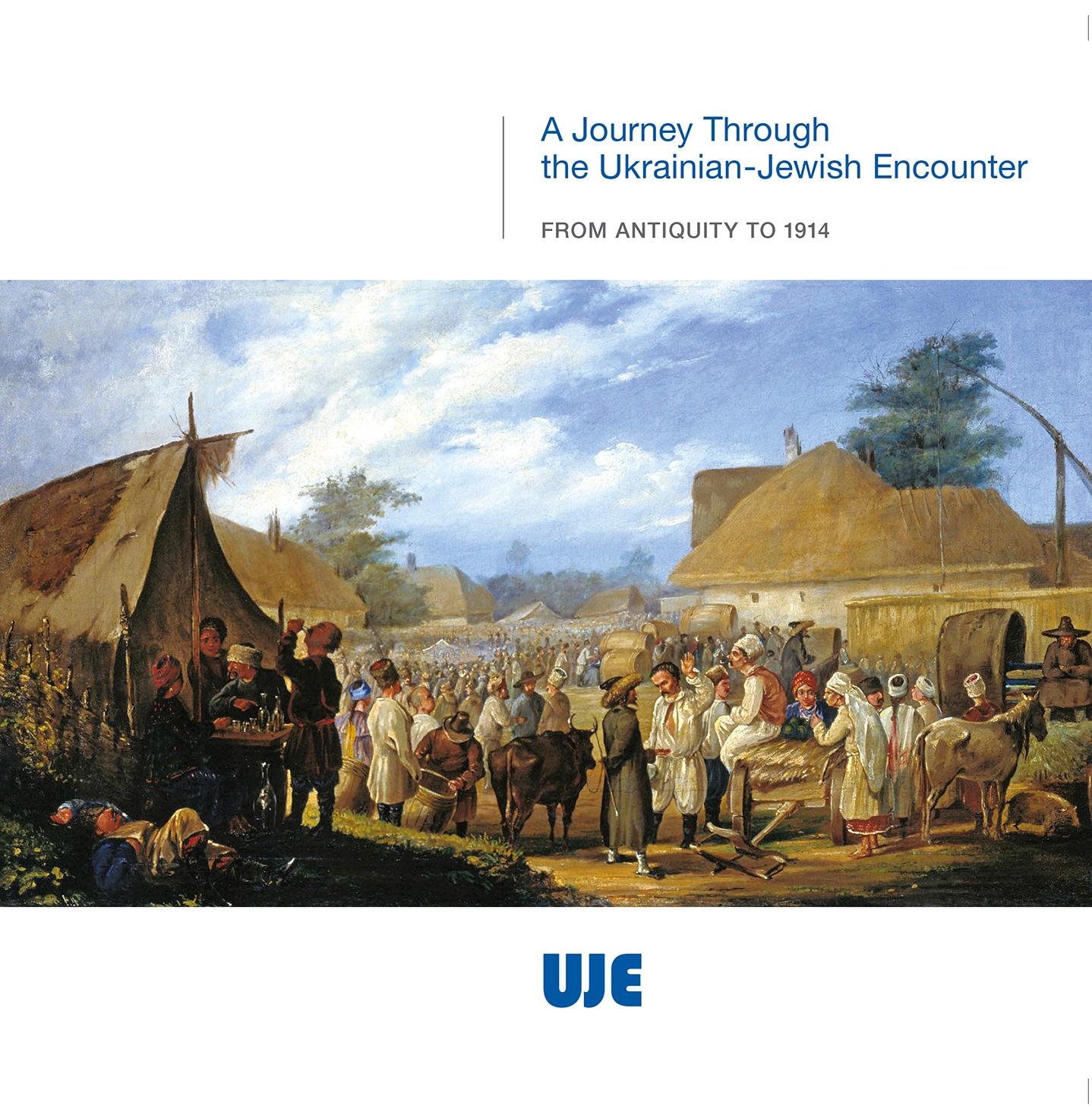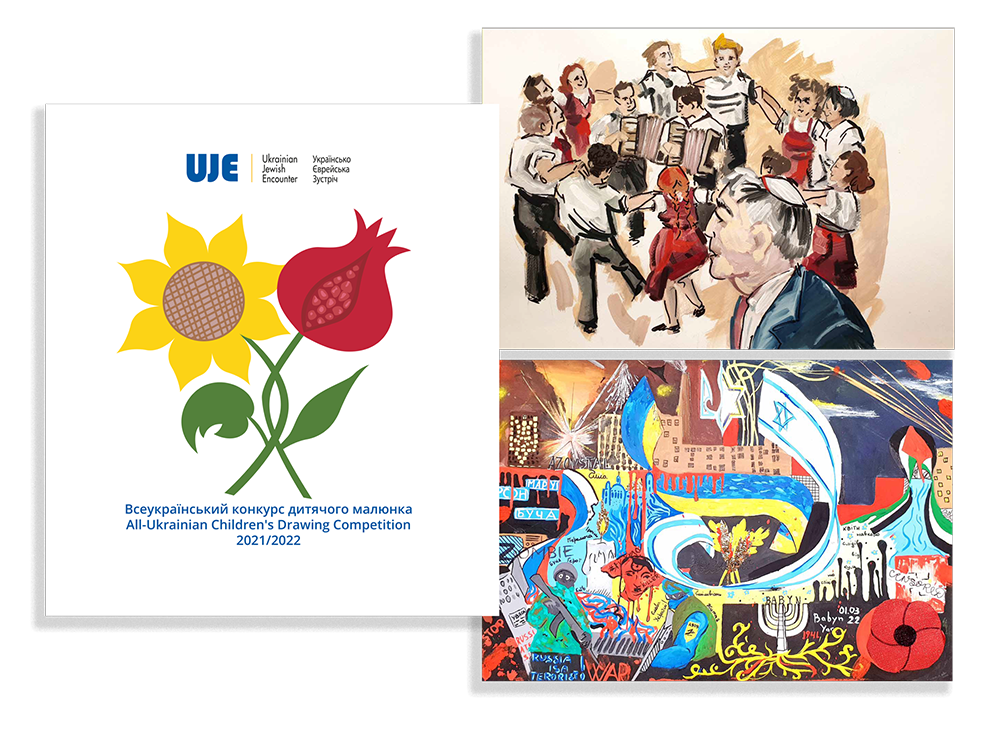Stanisław Lem's darkest star
Stanisław Lem once slipped away, having built his own world where he was the hospitable and slightly ironic host rather than someone who had to adapt to the world of others, expecting and kowtowing. Lem is often not included in studies of history, anthropology, and the history of ideas because he is "just a fiction writer." Even his most devoted readers are not always aware that he was an Eastern European Jew, fortunate enough to survive — a Holocaust survivor. Lem is often imagined as the protagonist of his debut fantasy novel, The Man from Mars: he seemed to have fallen to Earth from the sky, having nothing to do with the blood, sweat, and dirt of history. But this is not so. Not at all.
Lem's fictional stars emerged from the blood-covered earth he never managed to leave. The cosmic spaces of his works are filled with disturbing voices of the past.
Zero meridian
If you stand on the balcony of the Lem family's former residence on Bohdana Lepkoho Street (formerly Breuer Street) in Lviv, you find yourself on a kind of zero meridian. On the right, you see the magnificent building of the Austro-Hungarian Bank, the luxurious City Casino (now the House of Scholars), the monumental Galician Sejm, which, during Lem's childhood, housed a university full of academic luminaries in philosophy, mathematics, and linguistics. This was the place of Galician metropolitanism, capital, science, and high-society entertainment. Quite a different world would open to your view on the left: a modest Jewish quarter, separated from the rest of the city by the fast-flowing Horodotska Street, full of backstreets and damp courtyards with freshly washed linen, small shops, and workshops. You would see the beautiful Moorish tower of the Jewish Hospital rising over the quarter. Still, even this beauty would betray a note of anxiety, like the call of a distant eastern land, where either salvation or death could await.
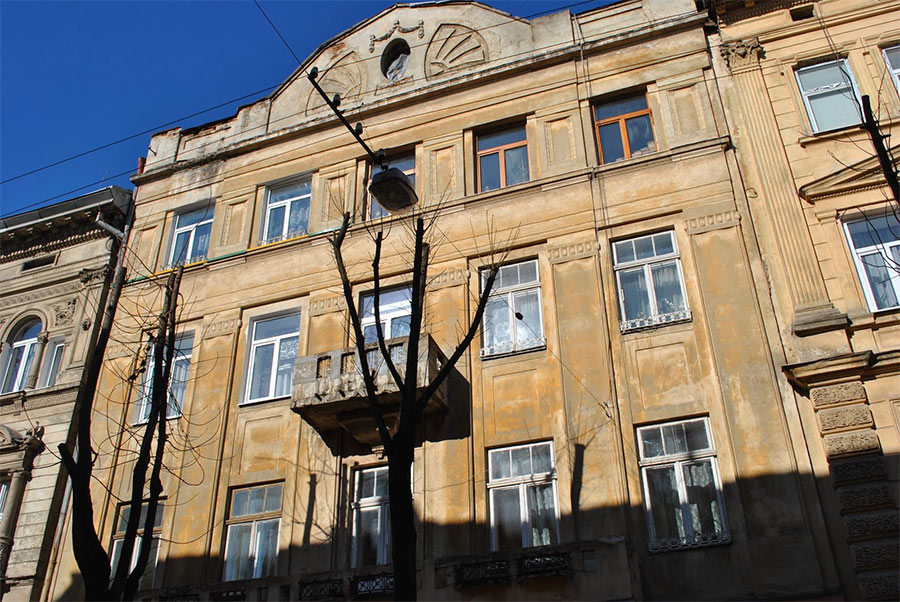
Stanisław's parents — Samuel Lem and Sabina Wollner — married in a synagogue and were activists in the Jewish community. At the same time, as Lem's biographer Wojciech Orliński asserts, they considered themselves Poles, namely Poles of Jewish origin.
Even though Jewish identity is firmly rooted in ethnicity and religion, this situation was nothing out of the ordinary. Why would the nature of identity have to be fixed once and for all? Why can't it be adapted to one's desires and needs?
At the turn of the 19th and 20th centuries, Lviv was one of the major centers of such a hybrid identity. In 1886, a young Jew, Wilhelm Feldman, a native of Zbarazh, came to Lviv to promote the Polish language and culture among his community as the most direct path to uobywatelenia, i.e., civil emancipation, which was supposed to help Jews leave the ghetto and enjoy the same chances for life success as Poles did. While this position was attacked by both Jews and Poles in the 19th century (Hasidic Jews once beat the young Feldman in a synagogue for praising Polish culture there), it was already a variant of the norm during Stanisław Lem's childhood in the 1920s.
Samuel Lem, Stanisław's father, was a well-known laryngologist, a practicing physician, an adherent of critical thinking and evidence-based medicine, a rationalist (who, nevertheless, wrote poetry in his youth, but who hasn't traveled down that path?), and a man seemingly far removed from any religion, especially from dark Jewish mysticism. There was a lot of professional medical literature in German and French at home, which little Stanisław liked not so much to read as to look at. The family also kept literary publications, mostly in Polish. Meanwhile, Lem does not mention seeing any Jewish books in the family home.
And yet Stanisław attended school classes in the Judaic faith. How did this happen? The explanation is simple: religious education was mandatory for all students at that time, and children were divided into "classes" based on their ethnic origin. In any case, this calls into question Lem's own statement from his German-language autobiography: "I had no idea about Judaism or, unfortunately, about Jewish culture. It was only thanks to Nazi legislation that I learned that Jewish blood flowed in my veins." Obviously, he had to have acquired some knowledge of the Jewish religion and culture, and he could be completely unaware of his origin. Why did he claim the opposite? Let's return to this question a bit later in the text.
The stability and "apolitical" nature of Samuel Lem's profession, as well as the reliable financial cushion it provided, allowed the family to watch national contests and political races in Lviv at that time from a somewhat elevated perspective (from the height of their balcony on the third floor). They were part of the self-confident and wealthy "upper middle class": Lem recalls having a French governess and a multitude of toys that created the space of his childhood — a carefree microcosm amidst the turbulent waters of the interwar Polish state, which was neither rich nor stable.
Among the things that little Stanisław loved to play with was a human skull bone. He was not allowed to touch this exhibit from his father's collection, but he would steal his father's key to open the locker. A similar thing — a human skull — belonged to Stanisław's uncle, Getzel (Marek) Wolner, also a doctor, who presumably died during the Jewish pogrom on 26 July 1941. (Lem thought it had happened earlier, during the Nazi execution of Lviv professors.) When recalling this episode, Lem let it slip that those gloomy exhibits were like harbingers of death, the signs of the Holocaust. And he immediately brushed this thought aside: no, that was just a coincidence. But once the word is spoken, it cannot be erased. The shadow of the Catastrophe fell over the carefree past, over his entire Lviv childhood, no matter how diligently Lem tried to whiten this shadow and remove it like a stain from a clean cloth. Random words and involuntary associations let the truth out.
The last cigarette of peacetime
From his birth in 1921 until 1945, when the Lem family was forced to leave the territories occupied by the Red Army, Stanisław lived in Lviv, almost never leaving it. The city was his world. Lviv was where all the best and worst things happened to him. Not surprisingly, he wrote about it for the rest of his life, producing hundreds of pages, although the city's name was rarely mentioned explicitly. Lem wrote about the best in a direct and detailed fashion, savoring the colors, contemplating the flavors, and bathing in the seasons. He wrote about the worst using hints, sparingly, intermittently, and without names or titles. But he could not help but write.
Could this be the reason why Lem became a science fiction writer? Did he want to be able to write about the most terrible things without having to drink this cup himself over and over again and drag the readers along into the hell of the past?
Caught between his inability to remain silent and the impossibility of free speech, Lem moved to another level, changing the rules of the game. He transferred everything to other planets and interstellar spaces, where the terrible scares but does not paralyze because it is only a distant reflection of the real earthly nightmare.
After all, imagining that all this happened not here but on some distant planet may be a good way of coping mechanism. Why not separate good from evil by a layer of atmosphere?
Lem knew perfectly well that he did just that — refining and fractionating the past. The brightest was what happened before 1939. This was followed by a darker layer from 1939 to 1941, while the blackest period came between 1941 and 1945. Everything that happened later was just forays of memory and imagination. Back and forth. Past and future. Almost never "here and now."
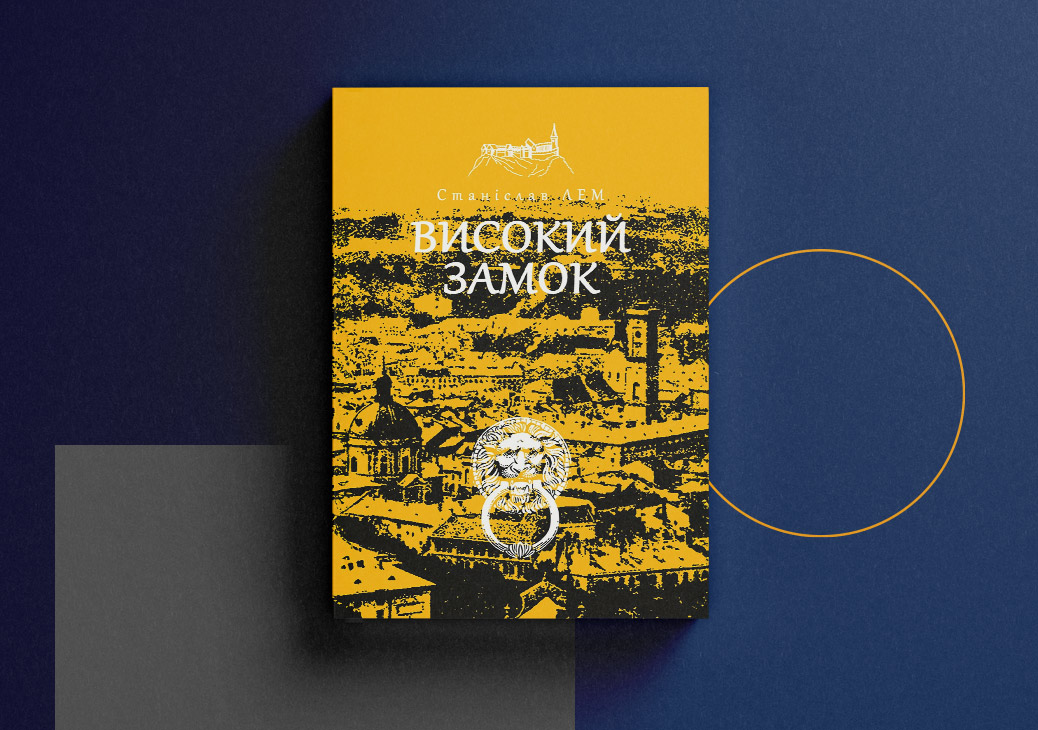
In the autobiographical novel Highcastle (1966, published in Ukrainian in 2016), Lem extracts the purest and most transparent fraction of memory. He is a child. Around him is an alluring world full of benevolent adults, sweet mysteries, and sweet cotton candy. Above the city (real and imaginary Lviv) rises a mountain, which is the entrance to a mystery.
Here's what's interesting: there is absolutely no mention of Jewishness in this idyll. Was Lem simply unwilling to let ghosts from the future, harbingers of inevitable death, into this magical world? He later wrote about his Highcastle:
"I wanted to do the impossible, namely to extract from my entire life the essence of my childhood in its purest form, cleansing it of the later layers, which consisted of war, genocide, and mass murder; nights spent in bomb shelters during air raids; life under a false name, never-ending hiding, and all other dangers — as if all this had never happened."
And yet, this story cannot be completely spared darkness. The Jews are not there, but there is their absence.
There is an involuntary mention of the empty streets of the former Jewish quarter "with the windows swinging open in the wind." Like an unwelcome memory and a bad premonition, darkness seeps into this text, as if coming through an inconspicuous crack or that bullet hole in the window of Lem's parents' bedroom that was there since the 1918 battles for Lviv, even before Stanisław's birth. Then come the mid-1930s: Lem undergoes military training with his fellow high-school students and marches to the "mournful, gloomy roar of drums, which seemed to have enveloped the entire city." Finally, as a kind of reference point of another time — the first "legal" cigarette smoked. The last cigarette of peacetime because it's 1939.
A life-saving coincidence
Lem wrote that he finally became aware of his ethnicity during the Nazi occupation, while the so-called "first Soviet occupation" made him aware of his class in 1939. He was a member of the "bourgeoisie," and so he could not be accepted by the Lviv Polytechnic as he had dreamed. Thanks to his father's connections, he began to study medicine at a university. Among other things, this helped him avoid being drafted into the Red Army.
Lem was prevented from finishing his studies by the new occupation. The Nazi administration shut down all higher education institutions in Lviv. For a while, Stanisław wore an armband with a Star of David, but the Lem family managed to quickly obtain so-called "Aryan papers," again thanks to his father's connections. This helped them avoid the ghetto but did not guarantee complete safety. The Lems were known all too well in the city.
As a "simple Aryan" with an appropriate ID, Stanisław Lem could and had to work. He got a job as an electric welder at a small industrial enterprise working for the defense industry of the Third Reich. Destroyed Soviet military equipment was brought there to have valuable materials recycled. Lem recalls that, at a huge personal risk, he handed over some useful parts of this "trophy scrap metal" to the anti-Hitler resistance movement.
Gradually, with terror in the city intensifying, staying at their home became dangerous, so Stanisław found a hiding place for his parents and himself: a Polish family took them in. Lem was relatively lucky: he had not only Aryan documents (as Jan Donabidowicz) but also "good looks" — he was blond — that did not betray his Jewish origin. This enabled him to occasionally even go to the library, where, as one might assume, he first became acquainted with American science fiction, available in German translations.
In the rare moments when Lem recalled those times without hiding behind masks and fantastic plots (as in letters to his translator Michael Kandel), he admitted that surviving the war was a mere coincidence, a millimeter by which death missed him on several occasions. He wrote:
My chances were approximately 1 in 100,000. That is a mathematically plausible figure, considering the percentage of survivors in my ethnic group.
Lem's estimate was not far off. Of the almost 100,000 Jews who lived in Lviv before World War II, a mere 215 survived in the city.
Lem initially faced death during the first Jewish pogrom between 30 June and 2 July 1941. He fell into the hands of the Sonderkommando during a street roundup and, like most of the captured young Jews, was forced to carry out of the basements the bodies of prisoners shot by the Soviet authorities as they were retreating from the city. Most of those captured then shared the fate of those whose bodies they had brought out into the light of day. Lem was also supposed to be executed.
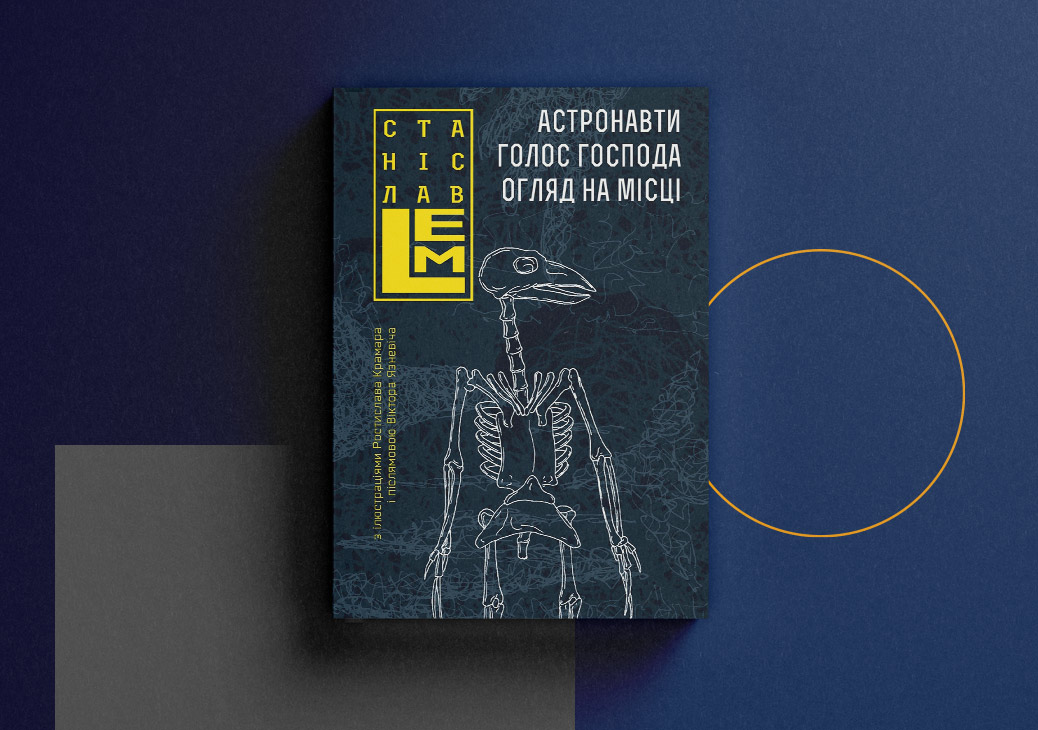
Later, in the fantasy novel His Master's Voice (published in Ukrainian in 2021), a certain Professor Rappaport appears, and his biography includes a terrifying episode: he survived a shooting in a prison in an unnamed Eastern European city. The professor stands in the prison yard for several hours, waiting for his turn to receive a bullet, and thinks about the transmigration of souls. Suddenly, a film crew from Germany appears, causing the shootings to stop. The professor is saved. In a 1972 letter to Michael Kandel, the author admits for the first time that Professor Rappaport (who does not even appear "personally" in the text, but only his story is told) is Lem himself.
Lem mentions another case in his autobiography when he narrowly escaped death. One day, he received an assignment to deliver a captured weapon to a member of the resistance movement with the strict prohibition of using public transportation to avoid unnecessary risk. But Lem disobeyed and got on a tram. A Nazi policeman jumped onto the step after him. Only a few centimeters separated his hand and the weapon hidden under Lem's clothes. If the policeman had felt metal under the cloth, Lem would most likely have been killed.
Did Lem experience survivor's guilt? After all, his case was truly exceptional, for not only he but also his entire family survived like a small fragment of an iceberg among the millions who perished. Wasn't this guilt, among other things, the force constantly pushing him to write about the unthinkable, finding impossible words somewhere far from the real world?
"Romance" with realism
The novel Hospital of the Transfiguration (published in Ukrainian in 2018) was Lem's first post-war work in which he tried to find words for the wartime experience. Written as harsh realism, it will disappoint those who love Lem as a science fiction writer and surprise those knowledgeable about the history of World War II, as it is neither science fiction nor historical truth.

The novel is set in 1940 (when Lviv was under Soviet rule) in the fictional town of Bierzyniec in Eastern Poland, somewhere in the German-occupied territories. The setting is a psychiatric hospital, where German soldiers stage an execution and shoot more than 180 patients. Many details, such as green hills and a "Moorish tower," point to Lviv, the only city of which Lem had personal war memories. A story about how the Jewish patients of the Lviv psychiatric hospital in Kulparkiv were imprisoned in the ghetto, although undocumented, circulated widely among Lviv residents. But why does Lem shift the action much further west, to some fictional town, and at least a year earlier? Why does he so diligently try to move it away from Lviv?
Agnieszka Gajewska, a researcher of motifs of the past in Lem's oeuvre and author of the book Holocaust and the Stars, points to censorship.
The post-war communist authorities in Poland did not like the topic of the Holocaust, even more so if the action took place in Eastern Galicia, in the territories "lost" after the war.
So, the anachronism was mere camouflage. The novel features the Nazi "Ukrainian police," who supposedly participated in the executions, but what kind of "Ukrainian police" could be there in 1940? This did not bother the censors for some reason, unlike references to Lviv.
In 1955, after the first unsuccessful attempt, Lem was finally able to publish the novel but had to supplement it with two more, Among the Dead and Return, generally written in the spirit of the political ideology of the time. He was never proud of them and only dared to republish individual chapters.
Discounting Highcastle, this was Lem's first and last "romance" with realism. Subsequently, only science fiction, only stars.
Human, all too human
Stanisław Lem is a peculiar science fiction writer in the world of world sci-fi literature. He is too pessimistic and reluctant to offer happy endings and create superheroes. His works contain a lot of humor, but bitterness shines through his jokes.
Strange as it may sound, science fiction and the Holocaust have a lot in common. The writer Tadeusz Borowski, an Auschwitz prisoner, made a similar remark about the realities of a concentration camp: "You see, everything here is unrealistic… Now I am all too familiar with the unrealistic and mystical." Israel Gutman, quoted by Gajewska, shared a similar sentiment about the world of an "Aryan" city when viewed from behind the ghetto gates: "An entirely different world: cleanly, normally dressed people laugh and carry flowers; families stroll along the streets… It's as if I'm looking at something happening on the moon."
The impossibility of the reality seen with your own eyes forces you to assume anything is possible — as long as you still hold on to common sense. And at the same time, this assumption lets you find the means to describe a reality radically different from all previous experiences.
"The rapid development of science fiction after World War II may have something in common with the post-Holocaust era in which we find ourselves… and in which we are trying to survive," Lem noted in an interview with Raymond Federman.
Lem did not believe that the Holocaust was over and would never happen again. Nor did he think that the Nazi machine of extermination was a historical exception. Lem's vision was that our future would be neither a global catastrophe nor a utopia. Instead, it would involve constant circling in the orbit of human imperfection, where every surge of spirit or thought would surely be matched by a crime that would bring everything down again and open another season of ruination.
His interstellar stories are as far from the communist pathos of "victory over space" as can only be imagined. Lem's space is a trap, a labyrinth, boredom, a war of attrition, and occasionally a triumph of unmotivated cruelty. Returning from space, as from war, his protagonists are different — silent, broken, and alienated. In fact, they often have nowhere to return. Similarly, returning to his home city would have had to be a journey in time rather than space for Lem.
Some of Lem's characters have the ability to travel through time, although it is more of a curse than a gift. Look at a certain Hal Bregg in the novel Return from the Stars (published in Ukrainian in 2017). Having set off for the stars at 18, he returns aged 39. This is precisely the time distance between Lem, the author of this novel and Lem, the Lviv resident, smoking his last pre-war cigarette. While Bragg travels through space, almost a century and a half has passed on Earth. No one here understands him. He shares terrible things that happened to him among the stars, but his words fall on deaf ears. The doctor to whom Bragg turns gives him what seems to be the only effective recommendation: "Keep your memories to yourself."
What are these memories? They are mainly of people. People who have disappeared or died before his eyes, those whom he could not help. Bragg arrives full of memories that the living do not want to hear. What they want are stories about the beauty of distant stars.
Bragg has a nervous breakdown when he sees how robots are selected for disassembling. The scene is painfully reminiscent …
One might assume that by taking evil to interstellar spaces and "evicting" it from Earth, Lem would try to "dehumanize" it, take it away from humans, and attribute it to some mechanisms or undefined extra-human forces. Not at all. Lem's evil is human, too human. The book From the Star Diaries of Ijon Tichy (published in Ukrainian in 2017) contains a scene where rebel robots on a distant planet select human children (the ghosts of the Holocaust come to life again). In the end, it turns out that these rebels are actually people who pretend to be robots. Only a human being can be the perpetrator of senseless violence.
Two messages from Lem
It is impossible to speak and impossible to remain silent. Trapped in the cage of this paradox, Lem's mind kept inventing new worlds, "formatting" reality so that the most terrible things could transpire without disturbing unhealed wounds but with the necessary truth of testimony. This need for testimony constantly arises in Lem's oeuvre.
In The Invincible (published in Ukrainian in 2017), the crew of a spaceship arrives on a planet where another ship, the Condor, has crashed. Inside and around the destroyed starship, the characters see horrific scenes: mountains of corpses, distorted faces, and telltale signs that madness gripped the crew shortly before death. After the expedition, one of the scientists addresses the rescue team, saying:
"I ask… each of you to share with me what shocked you the most on the Condor, what you may not have shared with anyone else, and what you thought was best forgotten."
This may be one of Lem's two important messages that resonate extremely powerfully today: you need to speak despite the impossibility of speaking. You need to speak even though some things exceed the limits of your imagination.
We often say that imagination is superfluous in the face of terrible facts, and we must use the dry language of reality. But we forget that imagination fuels any human story, and we cannot tell the unimaginable.
This is where Lem offers an unexpected "homeopathic" solution: plug fantasy in where imagination is powerless. Try to include in the seemingly detached, "fantasy" plot something that would be an unbearable burden on its own, like a lump of superheavy matter.
The second important message is relayed to us by Lem's protagonists: having failed and lost their friends and spaceships, experiencing mortal fatigue, and seeing their dreams collapse, they do not lay down their arms or accept defeat. They try again and again. Not because they believe in success and inevitable victory but because there is no other way.
 Ostap Slyvynsky
Ostap Slyvynsky
Ostap Slyvynsky is a poet, translator, and literary scholar. He is the author of five poetry collections, numerous essays, columns, and reviews in Ukrainian and foreign periodicals. His works have been translated into 16 languages. He translates fiction and scholarly literature from English, Belarusian, Bulgarian, Macedonian, Polish, and Russian.
Originally appeared in Ukrainian @Chytomo
Translated from the Ukrainian by Vasyl Starko.
This material is part of a special project supported by Encounter: The Ukrainian-Jewish Literary Prize. The prize is sponsored by the Ukrainian Jewish Encounter (UJE), a Canadian charitable non-profit organization, with the support of the NGO "Publishers Forum." UJE was founded in 2008 to strengthen and deepen relations between Ukrainians and Jews.







